-
 Bitcoin
Bitcoin $105,953.9980
3.06% -
 Ethereum
Ethereum $2,445.3292
6.68% -
 Tether USDt
Tether USDt $1.0006
-0.03% -
 XRP
XRP $2.1968
7.03% -
 BNB
BNB $643.2903
2.13% -
 Solana
Solana $144.2799
3.82% -
 USDC
USDC $1.0000
-0.03% -
 TRON
TRON $0.2739
0.49% -
 Dogecoin
Dogecoin $0.1642
4.47% -
 Cardano
Cardano $0.5834
5.49% -
 Hyperliquid
Hyperliquid $38.0741
2.80% -
 Sui
Sui $2.7741
7.56% -
 Chainlink
Chainlink $13.4107
11.26% -
 Bitcoin Cash
Bitcoin Cash $450.4828
-0.61% -
 UNUS SED LEO
UNUS SED LEO $9.1301
0.64% -
 Stellar
Stellar $0.2476
5.49% -
 Avalanche
Avalanche $18.0637
5.09% -
 Toncoin
Toncoin $2.9066
2.43% -
 Shiba Inu
Shiba Inu $0.0...01160
4.01% -
 Hedera
Hedera $0.1527
8.00% -
 Litecoin
Litecoin $84.6122
2.37% -
 Monero
Monero $317.6076
5.76% -
 Ethena USDe
Ethena USDe $1.0008
0.02% -
 Polkadot
Polkadot $3.4519
5.27% -
 Dai
Dai $1.0000
-0.03% -
 Bitget Token
Bitget Token $4.2835
5.62% -
 Uniswap
Uniswap $7.0443
9.78% -
 Pepe
Pepe $0.0...09964
7.41% -
 Pi
Pi $0.5391
4.64% -
 Aave
Aave $264.1743
11.26%
Do I need to stop loss if TRIX crosses three times in a row? What will be the subsequent trend in this case?
TRIX indicator's three consecutive crosses signal strong trends; implement stop loss based on risk tolerance and market conditions for effective risk management.
May 22, 2025 at 05:15 pm
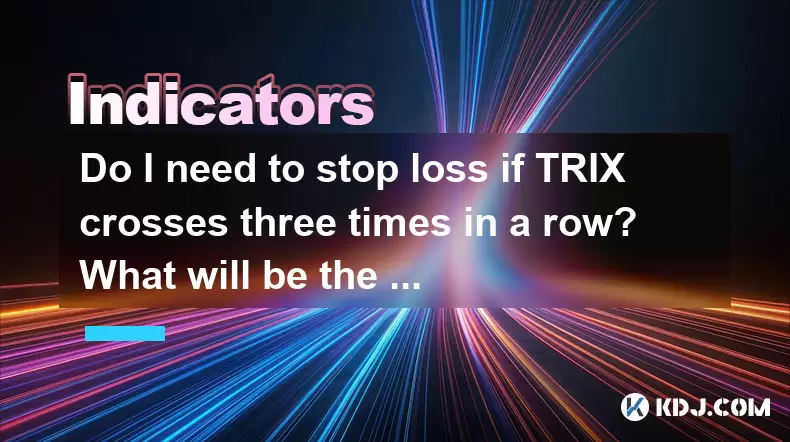
Introduction to TRIX Indicator
The TRIX indicator is a momentum oscillator that measures the rate of change of a triple exponentially smoothed moving average of a security's closing price. It is used to identify overbought and oversold conditions, as well as to generate buy and sell signals. When the TRIX line crosses the signal line, it can indicate a potential trend change. But what happens when the TRIX crosses three times in a row? Do you need to implement a stop loss, and what could be the subsequent trend?
Understanding TRIX Crosses
The TRIX indicator generates signals based on its line crossing above or below a signal line, which is typically a 9-day moving average of the TRIX. A bullish signal is generated when the TRIX line crosses above the signal line, suggesting a potential uptrend. Conversely, a bearish signal occurs when the TRIX line crosses below the signal line, indicating a potential downtrend.
Three Consecutive TRIX Crosses
When the TRIX indicator crosses the signal line three times in a row, it can be interpreted as a significant signal. Three consecutive bullish crosses might suggest that the market is strongly bullish, while three consecutive bearish crosses could indicate a strong bearish market. However, the reliability of these signals can vary based on market conditions and the asset's volatility.
The Need for a Stop Loss
Implementing a stop loss is a risk management strategy that can protect traders from significant losses. When the TRIX crosses three times in a row, the need for a stop loss depends on various factors, including the trader's risk tolerance, the asset's volatility, and the overall market conditions.
- Risk Tolerance: If a trader has a low risk tolerance, they might want to implement a stop loss to protect their investment, even if the TRIX signals seem strong.
- Asset Volatility: Highly volatile assets might require a stop loss to manage the risk of sudden price movements.
- Market Conditions: During periods of high market uncertainty, a stop loss can provide additional security.
Setting a Stop Loss After Three TRIX Crosses
If you decide to use a stop loss after observing three consecutive TRIX crosses, setting it appropriately is crucial. Here’s how you can do it:
- Determine the Stop Loss Level: Calculate the stop loss level based on recent price movements and the asset's volatility. A common approach is to set the stop loss just below a recent low for long positions or just above a recent high for short positions.
- Adjust for Volatility: Use tools like the Average True Range (ATR) to adjust the stop loss level according to the asset's volatility.
- Monitor and Adjust: Continuously monitor the market and adjust the stop loss level as necessary to lock in profits or reduce losses.
Analyzing the Subsequent Trend
After three consecutive TRIX crosses, the subsequent trend can be influenced by several factors. Here are some considerations:
- Market Sentiment: The overall market sentiment can impact the trend following the TRIX crosses. Positive sentiment might reinforce a bullish trend, while negative sentiment could strengthen a bearish trend.
- Volume: High trading volume accompanying the TRIX crosses can confirm the strength of the trend. Low volume might indicate a lack of conviction in the market.
- Technical Indicators: Other technical indicators, such as the Relative Strength Index (RSI) or Moving Average Convergence Divergence (MACD), can provide additional insights into the potential trend direction.
Case Studies of Three Consecutive TRIX Crosses
Let's examine a few hypothetical case studies to understand how the market might react after three consecutive TRIX crosses:
- Case Study 1: Bullish Crosses: Suppose Bitcoin (BTC) experiences three consecutive bullish TRIX crosses. The market sentiment is positive, and trading volume is high. In this scenario, the subsequent trend is likely to be bullish, with prices potentially increasing further.
- Case Study 2: Bearish Crosses: Ethereum (ETH) undergoes three consecutive bearish TRIX crosses during a period of market uncertainty. The trading volume is moderate, and other indicators suggest a bearish trend. Here, the subsequent trend might continue to be bearish, with prices likely to decrease.
Practical Application of TRIX Crosses
To effectively use the TRIX indicator and manage stop losses after three consecutive crosses, traders should follow these steps:
- Monitor the TRIX Indicator: Regularly check the TRIX indicator on your trading platform to identify potential crosses.
- Confirm with Other Indicators: Use other technical indicators to confirm the signals generated by the TRIX. This can help reduce false positives.
- Implement Risk Management: Set a stop loss based on your risk tolerance and the asset's volatility. Adjust the stop loss as the market moves.
- Review and Adapt: Continuously review your trading strategy and adapt it based on market conditions and the performance of your trades.
FAQs
Q1: Can the TRIX indicator be used in conjunction with other indicators for better accuracy?
Yes, the TRIX indicator can be combined with other technical indicators such as the RSI, MACD, or Bollinger Bands to enhance the accuracy of trading signals. Using multiple indicators can provide a more comprehensive view of the market and help confirm trends.
Q2: How does the time frame affect the TRIX indicator's signals?
The time frame used for the TRIX indicator can significantly impact its signals. Shorter time frames might generate more frequent but less reliable signals, while longer time frames might produce fewer but more reliable signals. Traders should choose a time frame that aligns with their trading strategy and goals.
Q3: Are there any specific market conditions where the TRIX indicator performs better?
The TRIX indicator tends to perform better in trending markets, where it can effectively capture momentum shifts. In choppy or sideways markets, the TRIX might generate more false signals, making it less reliable.
Q4: Can the TRIX indicator be used for all types of cryptocurrencies?
Yes, the TRIX indicator can be applied to all types of cryptocurrencies. However, its effectiveness may vary depending on the specific cryptocurrency's volatility and market behavior. Traders should test the indicator on different assets to understand its performance better.
Disclaimer:info@kdj.com
The information provided is not trading advice. kdj.com does not assume any responsibility for any investments made based on the information provided in this article. Cryptocurrencies are highly volatile and it is highly recommended that you invest with caution after thorough research!
If you believe that the content used on this website infringes your copyright, please contact us immediately (info@kdj.com) and we will delete it promptly.
- BlockDAG: The Cryptocurrency ROI Revolution
- 2025-06-25 06:45:12
- Layer 1 Crypto Token Presales: What's Hot in the NYC Crypto Scene?
- 2025-06-25 06:30:12
- Ethereum, Investors, and Memecoins: A Wild Ride on the Crypto Coaster
- 2025-06-25 06:30:12
- SEI Price Explodes: Is This Just the Beginning?
- 2025-06-25 07:05:13
- Meme Coins Mania: Arctic Pablo and the Hunt for Presale Gains
- 2025-06-25 06:50:13
- Mark Cuban, Meme Coins, and Scams: A Cautionary Tale
- 2025-06-25 07:05:13
Related knowledge
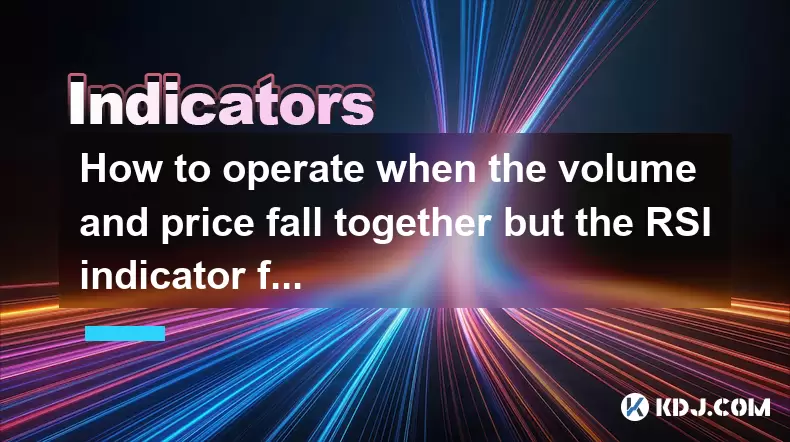
How to operate when the volume and price fall together but the RSI indicator forms a bottom divergence?
Jun 25,2025 at 04:29am
Understanding the Concept of RSI Bottom DivergenceWhen analyzing cryptocurrency price charts, traders often rely on technical indicators to spot potential reversals. One such signal is a bottom divergence in the Relative Strength Index (RSI). This occurs when the price makes a new low, but the RSI does not confirm that low and instead forms a higher low...
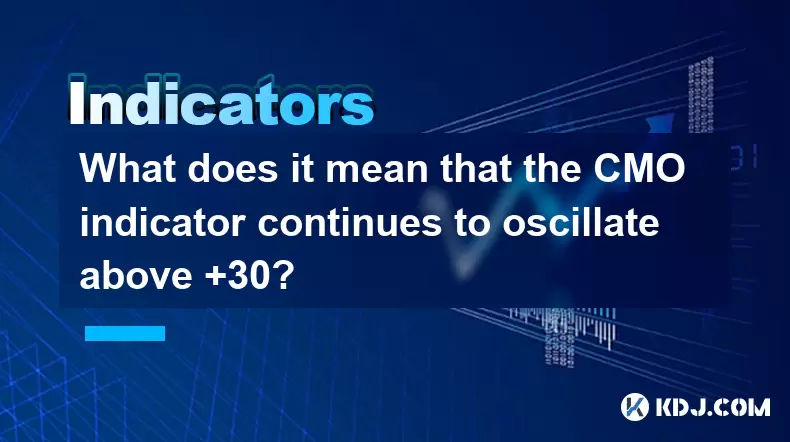
What does it mean that the CMO indicator continues to oscillate above +30?
Jun 25,2025 at 03:29am
Understanding the CMO IndicatorThe Chande Momentum Oscillator (CMO) is a technical analysis tool developed by Tushar Chande to measure momentum in financial markets. In cryptocurrency trading, the CMO helps traders identify overbought or oversold conditions and potential trend reversals. The oscillator ranges from -100 to +100, with values above zero in...

What does it mean that the ATR indicator suddenly doubles after hitting a new low this year?
Jun 24,2025 at 11:57pm
Understanding the ATR IndicatorThe Average True Range (ATR) is a technical analysis indicator used to measure market volatility. Developed by J. Welles Wilder, ATR calculates the average price range between a security’s high and low over a specific period—typically 14 periods. It does not indicate the direction of price movement but rather how volatile ...
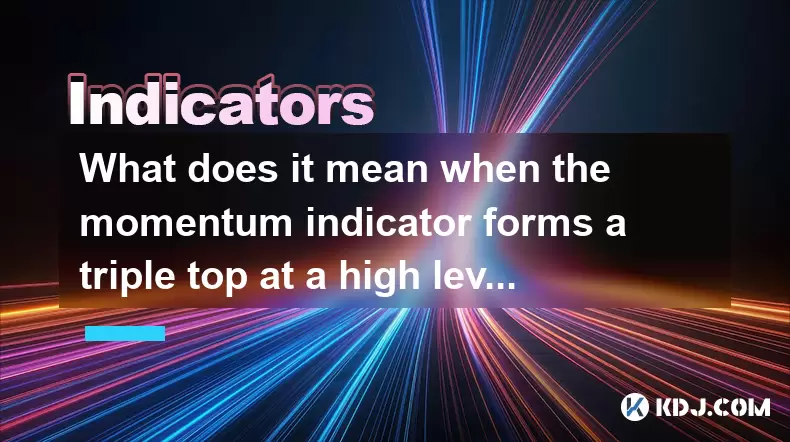
What does it mean when the momentum indicator forms a triple top at a high level?
Jun 25,2025 at 03:15am
Understanding the Momentum Indicator in Cryptocurrency TradingThe momentum indicator is a widely used technical analysis tool that measures the rate of change in price movements over a specified period. In cryptocurrency trading, where volatility is high and trends can reverse rapidly, this indicator helps traders identify potential trend reversals or c...
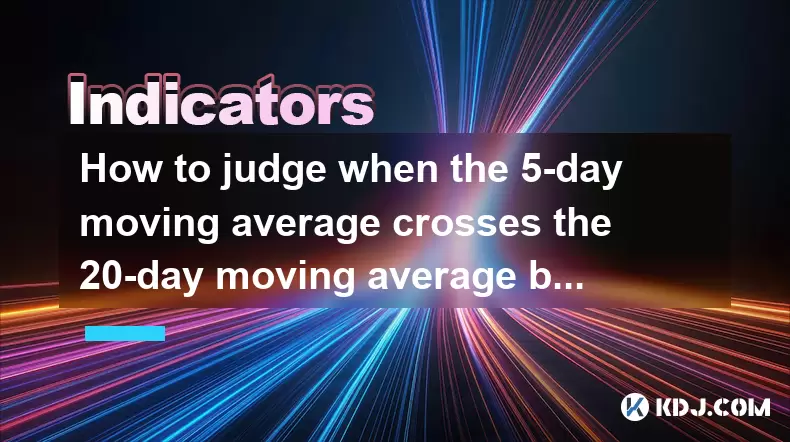
How to judge when the 5-day moving average crosses the 20-day moving average but the RSI shows a top divergence?
Jun 25,2025 at 06:28am
Understanding the Basics of Moving Averages and RSIIn technical analysis, moving averages are essential tools used to identify trends in price movements. The 5-day moving average (MA) is a short-term indicator that reflects recent price action, while the 20-day MA offers a broader perspective over a longer period. When these two lines intersect, it's kn...

What does the divergence between the volatility indicator and the price indicate?
Jun 25,2025 at 06:07am
Understanding the Volatility IndicatorThe volatility indicator is a technical analysis tool used to measure the rate and magnitude of price movements in financial markets, including cryptocurrencies. It helps traders assess whether a market is experiencing high or low volatility, which can influence trading decisions. Common types of volatility indicato...

How to operate when the volume and price fall together but the RSI indicator forms a bottom divergence?
Jun 25,2025 at 04:29am
Understanding the Concept of RSI Bottom DivergenceWhen analyzing cryptocurrency price charts, traders often rely on technical indicators to spot potential reversals. One such signal is a bottom divergence in the Relative Strength Index (RSI). This occurs when the price makes a new low, but the RSI does not confirm that low and instead forms a higher low...

What does it mean that the CMO indicator continues to oscillate above +30?
Jun 25,2025 at 03:29am
Understanding the CMO IndicatorThe Chande Momentum Oscillator (CMO) is a technical analysis tool developed by Tushar Chande to measure momentum in financial markets. In cryptocurrency trading, the CMO helps traders identify overbought or oversold conditions and potential trend reversals. The oscillator ranges from -100 to +100, with values above zero in...

What does it mean that the ATR indicator suddenly doubles after hitting a new low this year?
Jun 24,2025 at 11:57pm
Understanding the ATR IndicatorThe Average True Range (ATR) is a technical analysis indicator used to measure market volatility. Developed by J. Welles Wilder, ATR calculates the average price range between a security’s high and low over a specific period—typically 14 periods. It does not indicate the direction of price movement but rather how volatile ...

What does it mean when the momentum indicator forms a triple top at a high level?
Jun 25,2025 at 03:15am
Understanding the Momentum Indicator in Cryptocurrency TradingThe momentum indicator is a widely used technical analysis tool that measures the rate of change in price movements over a specified period. In cryptocurrency trading, where volatility is high and trends can reverse rapidly, this indicator helps traders identify potential trend reversals or c...

How to judge when the 5-day moving average crosses the 20-day moving average but the RSI shows a top divergence?
Jun 25,2025 at 06:28am
Understanding the Basics of Moving Averages and RSIIn technical analysis, moving averages are essential tools used to identify trends in price movements. The 5-day moving average (MA) is a short-term indicator that reflects recent price action, while the 20-day MA offers a broader perspective over a longer period. When these two lines intersect, it's kn...

What does the divergence between the volatility indicator and the price indicate?
Jun 25,2025 at 06:07am
Understanding the Volatility IndicatorThe volatility indicator is a technical analysis tool used to measure the rate and magnitude of price movements in financial markets, including cryptocurrencies. It helps traders assess whether a market is experiencing high or low volatility, which can influence trading decisions. Common types of volatility indicato...
See all articles
























































































